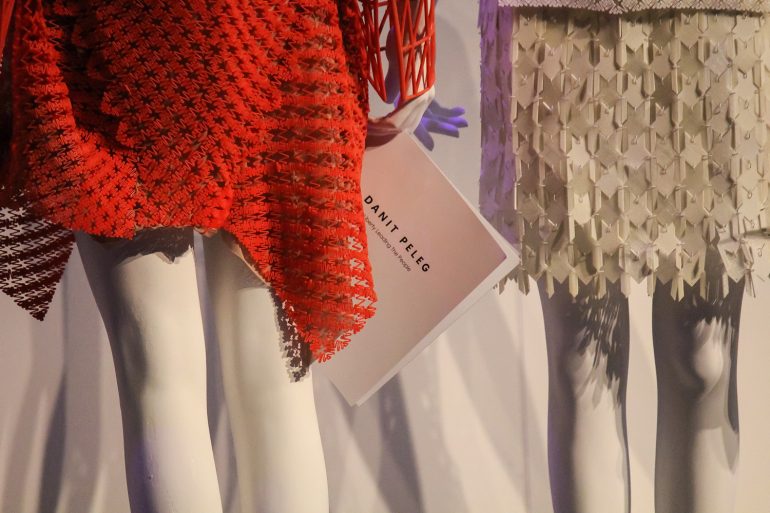Danit Peleg walked on stage, phone in hand, videotaping every second of her welcoming applause to SCADstyle 2019. This is the life we live, where every moment becomes intertwined with technology through photos, recordings, shares, likes and downloads. Peleg is no stranger to the ever-evolving world of technology, becoming the first person to 3-D print a fashion collection at home. There is no way to accurately predict the future, but one thing is for certain, technology will continue to infiltrate every aspect of our lives— including fashion.
Peleg kicked off the event with a presentation about her journey thus far and her dreams for the continuing merger of fashion and technology. A former student of Shenkar College of Engineering and Design in Tel Aviv, Israel, Peleg was always intrigued by the process of creating her own textiles. This often resulted in conducting messy experiments in her home— much to the delight of her roommates. She discovered 3-D printing while interning in New York City, where she assisted in the creation of two beautifully sculpted 3-D garments. However, with a $20,000 price tag, extremely breakable hard plastic and the actual production and printing conducted across the Atlantic Ocean in Belgium, this method was far from realistic for long-term 3-D printed fashion.
Returning to Israel with a desire to create 3-D printing for accessibility, Peleg decided to 3-D print her 5-look senior collection at home. After discovering desktop-size printers, Peleg spent day and night gaining the valuable knowledge she needed to properly execute the collection. The first successful piece, a fiery red jacket, was the start of a journey where she “felt so empowered and free.”
What is truly innovative about the technique is the wide array of possibilities. Peleg shared her vision for the future of 3-D fashion through 5 concise points: customer involvement, personalization and customization, zero inventory, zero waste and recyclability.
Peleg invited the audience to imagine shopping online for clothes, but, instead of having to decide how much you’re willing to pay for shipping, downloading the garment file and printing it right at home on your own 3-D printer. Peleg refers to this as the shift from “fast fashion to superfast fashion,” with superfast fashion involving the customer in the process of the production of the garment.
This would allow for the complete customization and personalization of clothes as the customer could decide the color of the filament (think of it as the plastic ink in 3-D printing) and input their body measurements to have the article of clothing perfectly scaled to their body before printing.
A significant difference between fast fashion today and Peleg’s superfast fashion of tomorrow is sustainability. With at-home printing, designer inventory and supply chain would be completely eliminated, which ties into Peleg’s fourth point of zero waste. No waste will be created through the traditional layers upon layers of packaging for shipping and in product development. No scraps of fabric will be leftover from unused material. In terms of reuse, the garments are made of fully recyclable plastic and can be converted back into raw filament to print something new again in a never-ending cycle.
In a controversial decision, Peleg has not applied for any patents to protect her work. “I truly believe in open source and I think in order to push the boundaries of this technology and make 3-D printed fashion a real thing, it has to be open to everyone.” Peleg wants to share her vision with other designers in hopes of building a 3-D printing, ready-to-wear community willing to solve the remaining challenges and design clothes to truly push fashion forward.
Written by Hannah Harris
Photo by Daniela Guevara


